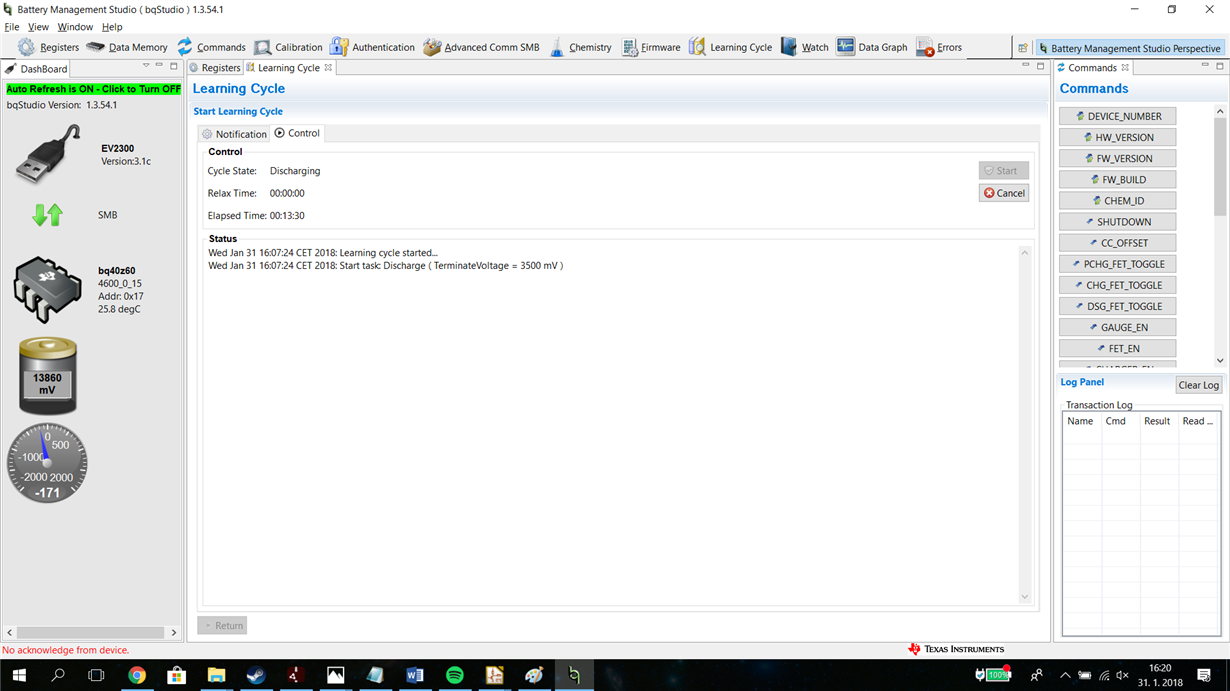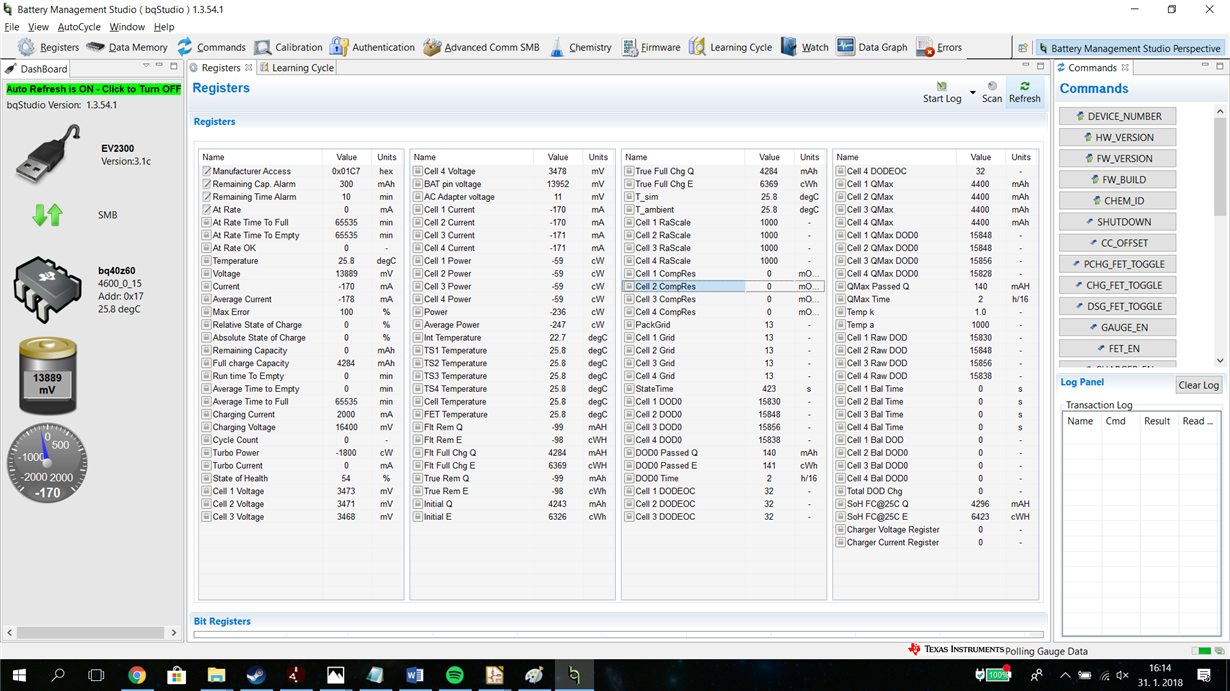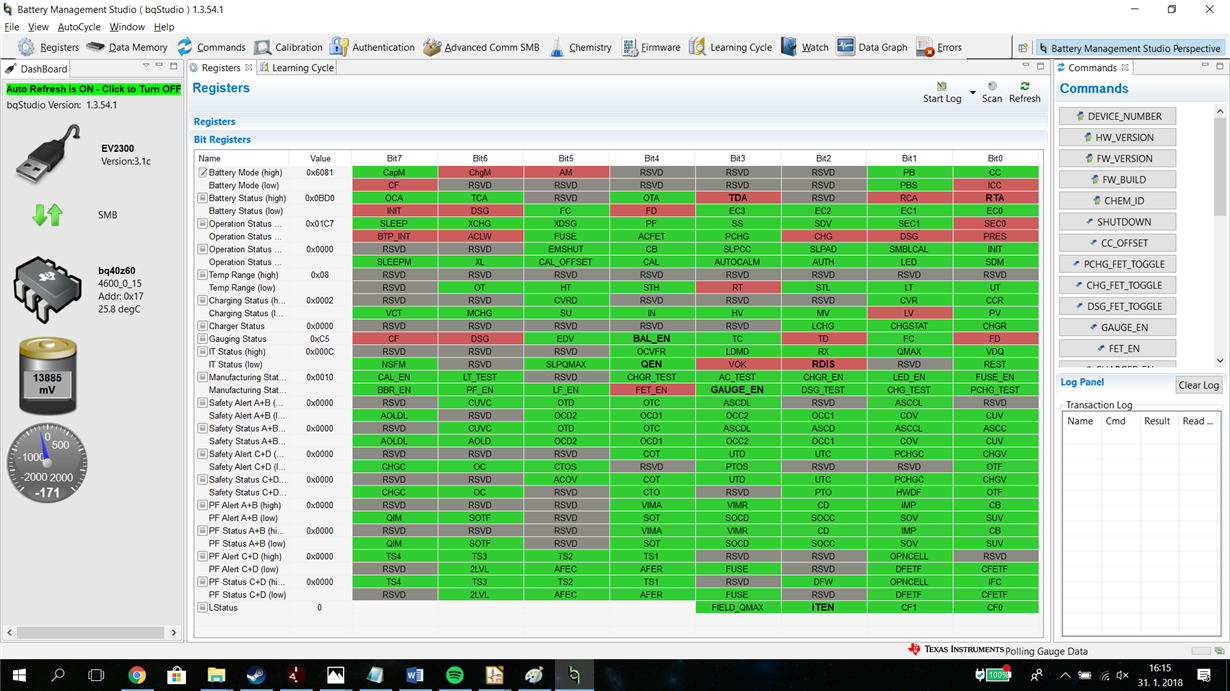Other Parts Discussed in Thread: BQ40Z50-R2, EV2400, GPCCHEM, BQSTUDIO
Hello Dear TI team
I have some problems with my custom bq40z60 board again. Now problems with charging occured.
The biggest problem is probabbly that I don't fully understand, how it should work.
I thought that, I will plug in AC adapter(I tried 20 V) and gauge will do everything for me. But it doesn't seem like that. When I plug in Adapter, it won't charge batteries.
I tried run my bq40z60 PCB without batteries, just with adapter and I measured output voltage 17,4 instead of 16,8 volts (I have 4 batteries in series - 4,2 [V] * 4 = 16,8).
So I realized that, I have to do it through Learning cycle. But It won't stop discharging.
As it is shown in 2 pictures below, I set 3,5 V as termination voltage, but it was still discharging.
register values are attached below
For better orientation i would rather sum up my questions in points
1) What exactly shoud the bq40z60 do, when I plug in adapter, and what is optimal voltage? Are 20 V OK (for my 4S1P) ?
2) Is it necessary to run learning cycle for charging battery ?
2) How to run learning cycle properly, when my battery is not fully charge, and I don't want to discharge it to much
3) What does Manual option mean (instead of automatic) for learning cycle ? Does it mean, I have to disconnect Load after discharge? Because there are FETs, that can eliminate current from batteries to the load.
So, when I chose Manual, I have to be with my board and when batteries are discharged, I have to be there and disconnect load ?
And can I rely on that it stops discharging on 2.9 Volts ? Becouse as it is shown on the 2nd picture, it was still discharging, when its voltage was below set 3,5 [V]
4) Can I limit current with Max Current Register ? Or what exactly this register does?
I attached .srec file.
Thank you for any help !
Regards Ondrej31_1_2018.zip





